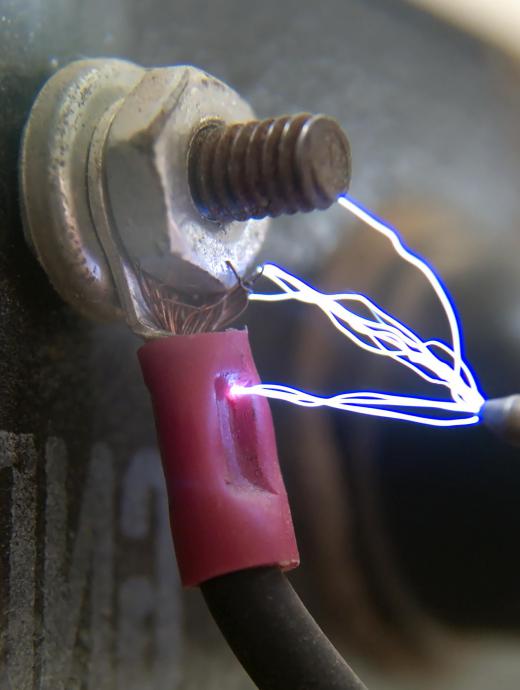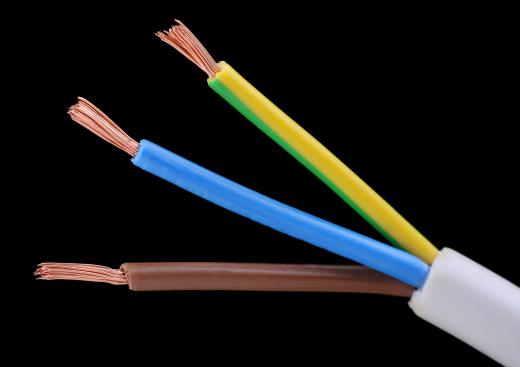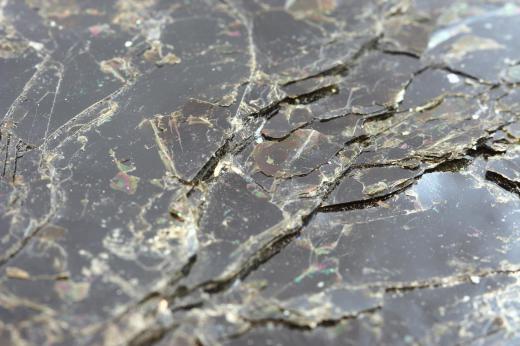Electrical insulators, also sometimes called “dielectrics,” are materials that can withstand and absorb the flow of an electrical current and are commonly used to seal or protect electrical wires. Wires and other electrical conductors are usually very powerful in terms of the charges that they emit. Unless they’re insulated, there’s a risk that people could receive an electrical shock by touching or even working closely with them, and they also present an increased risk of fire when they’re closeted within structures made of wood or other flammable materials. An insulator basically protects and shields the conductor so that electricity can flow through the conductor, not out of it. Insulators are common in construction, in industry, and in mechanical applications — basically anywhere there is an electrical current that needs shielding. They can be made of many things. Glass and porcelain were some of the earliest models, and these materials are still popular in some settings. More commonly, though, modern conductors are covered in resins of silicone or other plastic-like materials designed specifically for electrical purposes.
Basic Composition

Dielectric materials are made up of substances with electrons, or energy particles, that are compressed together by chemical process. It is almost impossible to get electrical voltage to pass through these materials. Some insulators are considered to have higher thresholds for electrical voltage than others, and as a class these are usually called “high voltage insulators.” These sorts of insulators are really important for things like transformers or large circuits at power plants. They are probably more powerful than someone would need to coat a home electrical system or a set of wires in an appliance, but they would work in most cases. The main idea here is to coat the wire or other “live” element to keep the current, whether weak or strong, contained.
Early Models

Glass was commonly used as an electrical insulator in the early days of electricity. Technicians discovered pretty quickly that live wires were a danger, and glass was one of the most readily available substances that could contain the charges. It was usually formed into tubes of varying diameters that would slip over wires and other electrical elements. In the 1800s, this material helped to protect exposed telegraph wiring.

Along with other non-metallic materials such as porcelain, mica, and ceramic, glass can withstand the highest volts of electrical current. Rubber was invented in the mid-1800s, and it was initially used to help seal the glass insulators and to give them a tighter, snugger fit along the wires. Rubber has a lower voltage threshold than glass and porcelain because of its loose electron composition, which made it less suitable for use on its own. Together with glass or porcelain, though, the result tended to be very strong.
Modern Advancements

Electricians today are often able to get a much tighter, more custom fit with the use of Teflon® and silicon dioxide sleeves. These materials are highly malleable, which means that they can be made to really coat the wires and conductors with very little space on either side. As they have become more commonplace, they have also become less expensive. Sleeves move with the wires in most cases, and can be very valuable when it comes to protecting power lines and the internal wiring within transformers and generators.
Composite Insulators
There are also composite insulators that are made from a combination of several different materials. Sometimes these use something like glass in one place but Teflon® in another, but they might also be made from wholly proprietary blends or combinations of materials. Composite insulators are suitable for a variety of electrical engineering purposes, ranging from automobiles to appliances. They tend to lack the strength that glass and porcelain has to withstand high electrical voltage and can wear out faster, but they are ideal for large-scale manufacturing applications because of their low costs and versatility.
